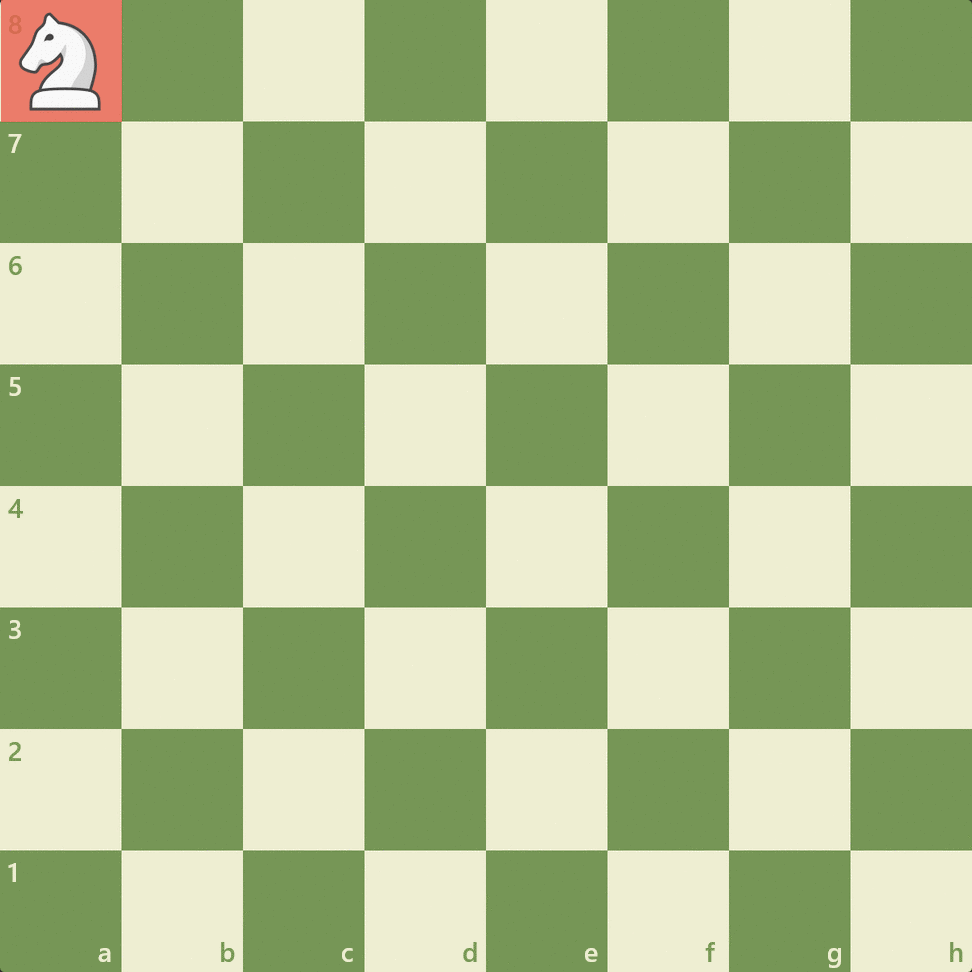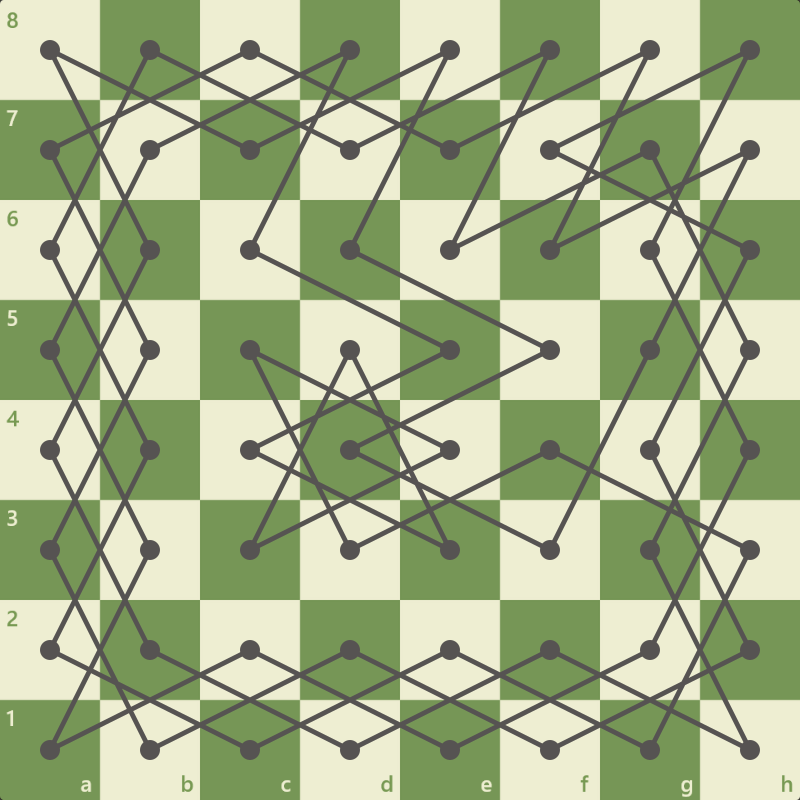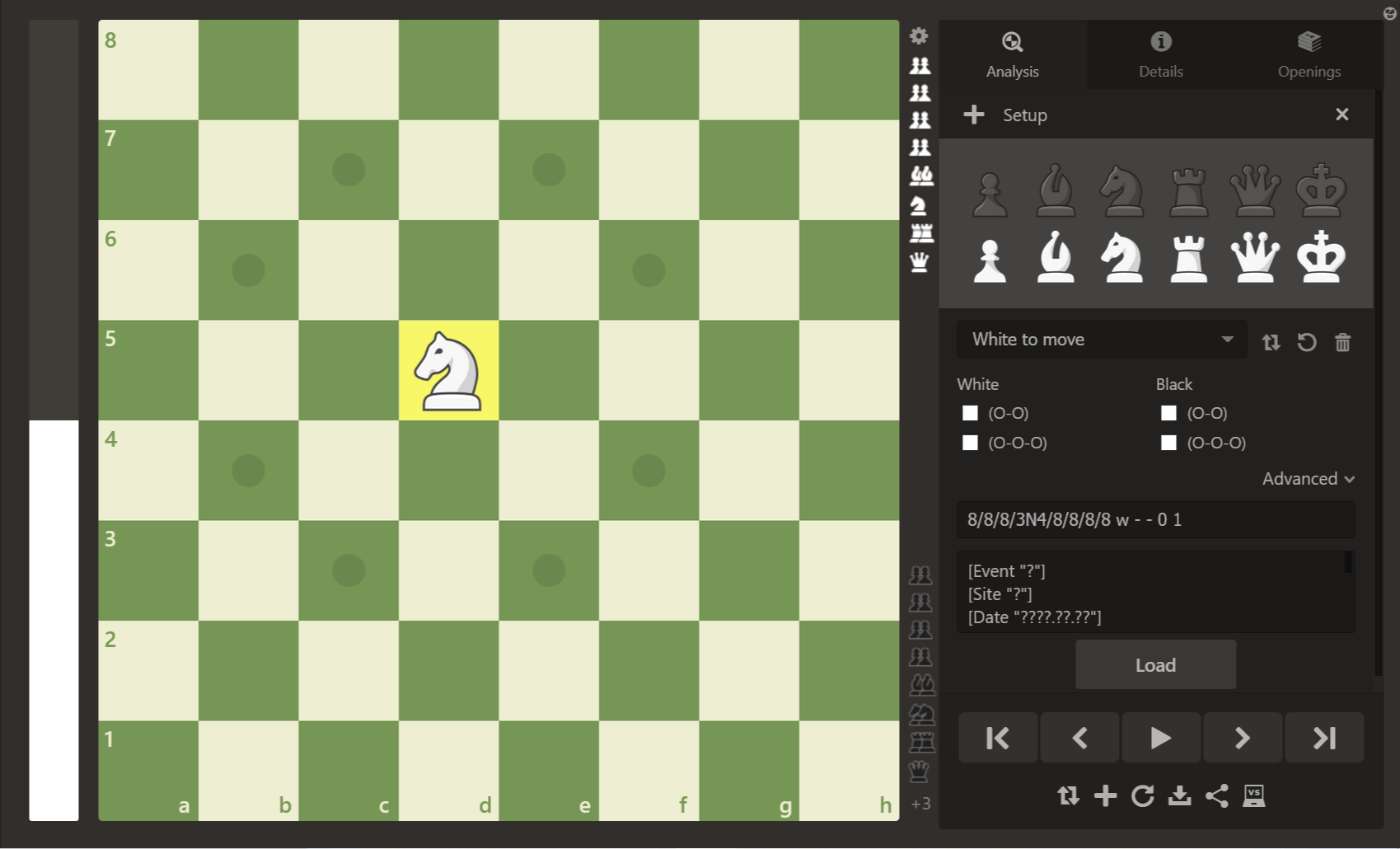
Knight's Tour
How can your knight help you during a game if it's not truly acquainted with the chessboard? Make sure you give your knight a tour around the chessboard, so it gets to know the whole battlefield before you start another game.
Here's what you need to know about the knight's tour:
- What Is The Knight's Tour?
- Closed Knight's Tours
- Open Knight's Tours
- How To Try To Solve The Knight's Tour On Chess.com
- Conclusion
What Is The Knight's Tour?
The knight's tour is a chess problem that first appeared in around the ninth century. It consists of a knight starting at any square of the board and moving to the remaining 63 squares without ever jumping to the same square more than once.

There are two kinds of solutions to the knight's tour problem, the closed and the open tours.
Closed Knight's Tours
Closed knight's tours are those in which the knight's last move is one knight's move away from the initial position. In practice, this means that the knight's path forms a loop. In this type of tour, the knight can always go through the same path, wherever its starting square is.

There are 26,534,728,821,064 possible closed tours (including reversals, reflections, and rotations). One famous closed tour is the one used by the Turk, a fake chess automaton created in 1770.

Open Knight's Tours
Open knight's tours are those in which the knight can't reach its starting square from its final position. The knight can't go through the same path when placed on different starting positions in this type of tour.

A well-known open tour was created in 1847 by William Beverley and published in The Philosophical Magazine in 1848. Beverley's solution is famous for combining the knight's tour features with those of the mathematical concept of a magic square. Assigning a value to each square (determined by the knight's move order) and adding the numbers on each column and each row together always result in 260.

How To Try To Solve The Knight's Tour On Chess.com
Even though the knight's tour has no utility in a real game, trying to solve this problem is an excellent way of getting familiar with the knight's movement and improving your calculation skills.
Trying to solve the knight's tour problem is easy on Chess.com. You can do it by going to Chess.com/analysis, choosing the Setup option, and clicking the trashcan icon to clear the board. After that, you can place a knight on any square and try to solve the knight's tour.

If you need extra help to remember which squares you've visited with your knight, you can right-click any square your knight has stepped on to paint it red.

Conclusion
You now know what the knight's tour problem is, why you should try to solve it, and how you can do it on Chess.com. Head over to our Lessons page to learn about knight endgames so you can get even better at using your knights to win more games!







